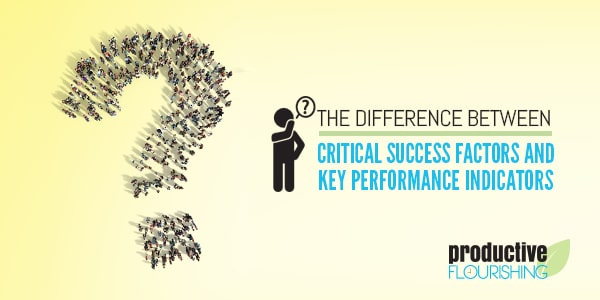KPIs vs CSFs: Analyze Your Business Momentum
The difference between critical actions and their effects
What actions are critical to the success of your business and which effects are the most important?
If you've ever seen the acronym KPI or CSF in a business context, you've seen a shorthand to those two questions above. KPI stands for Key Performance Indicators, whereas CSF stands for Critical Success Factors. Some people use them interchangeably or confuse them, but they're two totally different concepts.
The easiest way to understand them singly and in contrast is by understanding that CSFs are the cause of your success, whereas KPIs are the effects of your actions. Thus, there's a tight relationship between them: if you've properly identified your CSFs and have been executing on them AND you've properly identified what your KPIs are, you should be meeting — or getting close to meeting — your KPIs.
If we drop the lingo, basically we're asking "what must we do to be successful?" (CSFs) and "what indicates that we're winning?" (KPIs).
The use of KPIs can be strict or loose. Using them strictly means that you set a baseline, i.e. "$10k sales of this product line in a month is our baseline KPI;" in this use, if you get $10k sales in that product line, you're meeting your KPIs. Using them loosely means that you'll be watching data trends to determine whether you're performing better, i.e., "we'll be watching the sales data from this product line over this month since it's a clear indicator of our performance." Both ways of using KPIs have their uses; the more uncertain you are of the relationship between your CSFs and business momentum, the looser you'll want to use KPIs.
The key part of KPIs is that they help you limit the amount of data you have to make sense of. The actions you take in your business often have many different effects, but not all effects are equal. For instance, gross revenue is almost always a KPI for every business, regardless of what stage of business they're in, because one of the evergreen goals of a business is to generate profit. Because different actions and decisions may cause a drop in profit, sometimes profit isn't the right metric to track because it will lead myopic decisions. In general, what we pay attention to grows, and KPIs help us pay attention.
These acronyms formalize and test our intuition, as well as getting us to really analyze the causes and effects of our business momentum. For example, many business bloggers posit an increase of traffic as a KPI and thus endeavor to do the things that increase traffic (informally making those activities CSFs), only to find out that an increase in traffic doesn't actually affect their COV matrix. Brick-and-mortar business owners posit more people in the store as a KPI, only to find out that people aren't actually buying anything while they're in there and they need to rethink their sales process. I could go on, but you get where this is going.
So, over to you:
For this month, what are your goals as far as COV goes?
What are the KPIs that relate to those goals?
What CSFs will get you there?
Bonus: review some of your past activities that you thought were CSFs. If you did them, did you see a positive correlation between those CSFs, your KPIs, and your COV goals?




